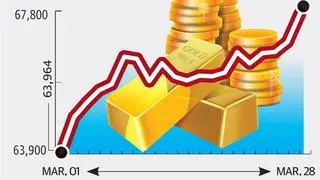Good times aren’t setting in anytime soon for cement, going by the latest picture.
The sector is yet to recover from the November 2016 demonetisation. Lack of demand is impacting prices across the country. February 2017 prices were quoting below the average prices that prevailed in regional markets in October 2016, before demonetisation. Over the last one year, prices have dropped by 2.9 per cent, according to data provided by Nirmal Bang Research.
According to India Ratings, volumes of pan-India cement players were down by 5 per cent y-o-y in the third quarter of 2016-17. While for the central and north-based players, volumes fell by 3 per cent and 6 per cent respectively, they were, however, up 21 per cent for the southern region. Increased construction activity, spurred by investments into infrastructure and irrigation in Andhra Pradesh and Telangana, led to higher demand in the southern region in Q3.
Telangana and Andhra Pradesh are continuing to show signs of growth in demand, spurred by strong construction activity and pick-up in spends of government housing schemes. However, due to the political uncertainty in Tamil Nadu, as well as concerns over sand supply, construction activity has slowed in the State. All-India average cement prices, March 2017, were hovering around ₹306 for a 50-kg bag. Among regional markets, the southern market tops with an average price of ₹338, followed by eastern market at ₹318 and western market at ₹302 for a 50-kg bag. Prices of central and northern market were at ₹295 and ₹278 per 50-kg bag, respectively.
Cost savingsThere has been some respite for manufacturers on the cost front. Petcoke prices softened in February and March. Cement manufacturers have increasingly been substituting coal with petcoke for production which, in turn, helped them save on costs.
Also, the Railways’ discounts for long-term contracts, on assured freight volumes, could be leveraged to save further on costs. However, it remains to be seen if these cost savings will be passed on to the customers.
Delayed recoveryWith demand recovery taking longer than usual in all the markets except in the south, many manufacturers have massively cut production in the past few months. During the months of December 2016, January-February 2017, production was down by 8.7 per cent, 13.3 per cent and 15.9 per cent, respectively, on a y-o-y basis. The per cent drop in the month of February was the highest in the last decade.
Latest figures indicate that industrial capacity utilisation touched a low of 60 per cent.
Rural housing (40 per cent), urban housing (25 per cent) and infrastructure (20 per cent) are major demand drivers for the industry. While the north and central markets were drastically impacted by the demonetisation and are yet to fully recover, the hope is that low-cost housing and investment into infrastructure, especially Roads and Railways, give a boost to demand.
Over the medium term, demand is expected to exceed supply with a slowdown in capacity addition. It will create the ground for better price appreciation in the future.
But for now, good times will take longer than the anticipated six months, in the wake of demonetisation. The southern market is relatively unaffected. However, onset of monsoon is likely to reduce construction activity in the region and keep prices lower.








Comments
Comments have to be in English, and in full sentences. They cannot be abusive or personal. Please abide by our community guidelines for posting your comments.
We have migrated to a new commenting platform. If you are already a registered user of TheHindu Businessline and logged in, you may continue to engage with our articles. If you do not have an account please register and login to post comments. Users can access their older comments by logging into their accounts on Vuukle.